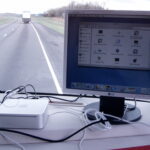
Drive By Blogging
What Happened to January?
Well. That is a very good question. Was I off taking exotic vacations? No. Was I abducted? No. We spent the last month…planning.
Planning what?
Planning the next year which is already booked solid.
I’ll make a concerted effort to keep this place updated as we blaze ahead.
One Note Wish List
I’d like to add TOC functionality to my One Note feature wish list. I am working on one that is becoming a bit “unwieldy.”
That is all.
Funny. Enough Said.

If anyone is still wondering about how great Bitcoin is or how the government makes great decisions regarding Bitcoin, please…show yourself out.
Awesome Use of Technology
By using a brain implant, people who are paralyzed.
Three people paralyzed from the neck down have been able to use unmodified computer tablets to text friends, browse the internet and stream music, thanks to an electrode array system called BrainGate2. The findings could have a major impact on the lives of those affected by neurologic disease, injury, or limb loss.
via Engadget
The system uses an array of micro-electrodes implanted into the brain which decode, in real time, the neural signals associated with the intention to move a limb. The three people involved in the trial had electrode grids implanted over part of their motor cortex — the area of the brain that helps control movement — which picked up neural activity indicating they were thinking about moving a cursor on the screen. Those patterns were then sent to a virtual mouse that was wirelessly paired to the tablet.
Daylight Savings Time Saves 0.03%
There is a pretty good article in the local newspaper today about Daylight Savings Time, who thought of it, why, and how most countries would like to get rid of it.
Ben Franklin sometimes gets credit for coming up with the idea of saving time because of a 1784 essay for The Journal of Paris that suggested the French could save on the cost of candles by getting out of bed earlier to take advantage of sunshine. But the piece was satirical, and he never mentioned turning clocks back or forward.
via LNP (paid subscription)
Germany became the first country to adopt the measure, to save coal during World War I. France and other countries followed suit. The U.S. tried daylight saving time in 1918, but repealed it a year later. However, some states set their own daylight saving time, leading to confusion.
It wasn’t until the establishment of a uniform system under the Uniform Time Act of 1966 that daylight saving time became standard. It gained traction under the belief that electricity use inside homes would drop as people stayed outside to enjoy the later sunset. And, it was believed most people would be awake after the sun had already risen and have less need for lights.
The federal government also believed daylight saving time, which begins in spring and ends in fall, would prevent traffic crashes as morepeople would travel to and from school or work during daylight. Further, it was believed daylight saving time would reduce crime as more people remained outside during daylight when less crime took place.
Leaving on a Jet…wait..
…ah…Leaving on a bus.
That is right. Big huge bus trip happening tomorrow morning. I plan to take lots and lots of pictures.
I’ll post them here.
Also, can’t wait to see how the new Series 4 Apple Watch works for the entire day.
How to see if your Facebook account was compromised
Follow this link. It will tell you if your account was hacked. There is a box near the bottom that looks like this…

Slashdot has more information here.




































